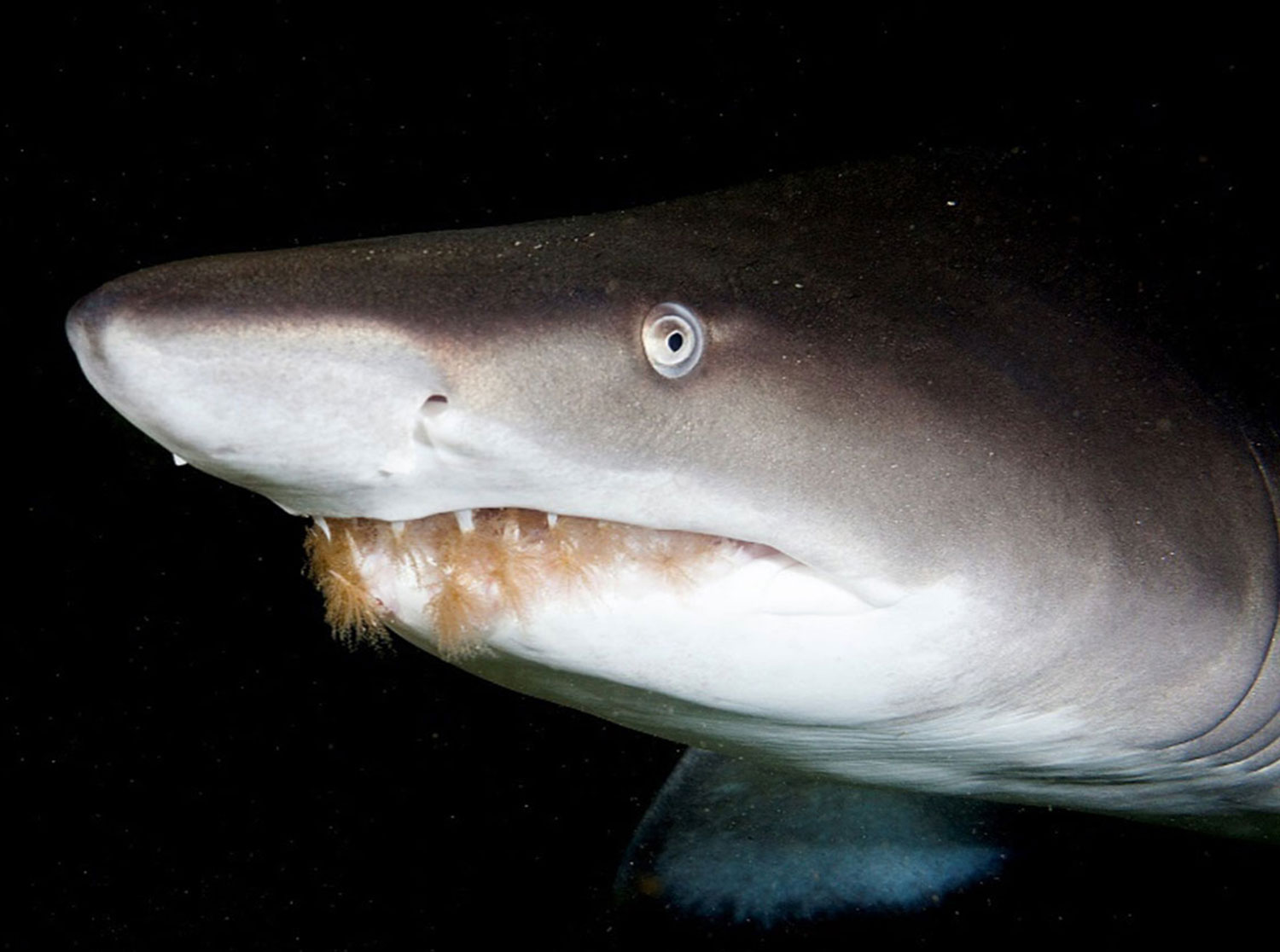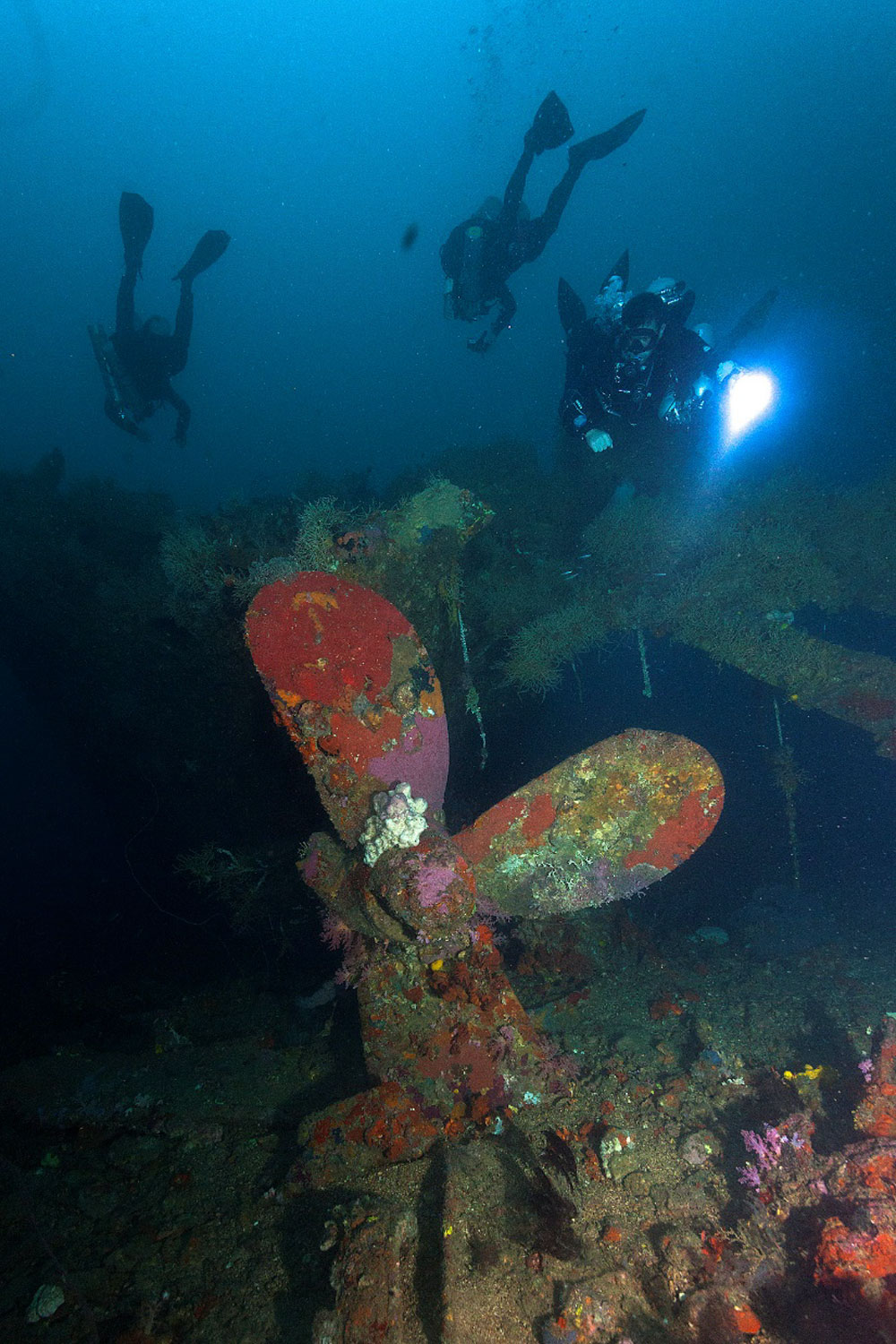Features
Fear and Loathing in Scuba Diving
Fear is a fundamental and useful emotion in humans and in our mammalian relatives. It signals the presence of a dangerous situation to the mind. Just as with all emotions, fear plays an important role in our mental functioning. In scuba diving, for example, the fear of entering a dark, narrow cave tells the diver correctly that diving this cave is risky, especially without adequate training.
Fear may also be counterproductive: Some folks don’t want to dive at all because they are overly afraid of unknowns they might encounter during a dive, such as sharks. In other situations, fear may impede performance during a dive, and even escalate and lead to panic. We can think of these instances as improper functioning of the fear response, caused by putting humans in an environment (swimming underwater on scuba) which they didn’t evolve for and are often not used to.
In this article, we will discuss what modern brain research has found out about fear, and how these findings relate to scuba diving.

A grey nurse shark, seen in Maroubra, Australia. This fish will evoke fear in many divers. It’s in fact a specialised fish eater (as can be deduced from its pointy, fish-spearing teeth), and hostile encounters with divers are extremely rare. In most cases, being afraid of sharks is a misplaced function of the fear emotion.
The physiology of fear
Once an individual becomes afraid, for example due to an unexpected mishap underwater, a number of physiological changes happen to his or her body. The breathing rate increases, the heart beats faster, and the blood pressure rises. Many readers will have observed these changes in their own bodies.
But we are not passively at the mercy of our fear. By focusing the mind and actively controlling our breathing, we can manage our fear.
This is the first insight from brain research we encounter – the brain talks to itself a lot. Most of the connections between brain areas do not originate from our senses (the outside world) but from other brain areas. The brain regions involved in planning and self-control can affect those involved in fear. But which brain areas are these?
Fear in the brain
The human brain is divided into multiple areas, each with distinct functions in controlling our emotions, sensations, and behaviours. The area of the brain most prominently involved in processing fear is the amygdala. The amygdala is part of what is called the limbic system, a system of brain areas involved in emotional and involuntary functions. There is one amygdala on each side of our brains. The amygdala connects input from our senses, such as vision and hearing, to information about unpleasant events. Basically, it’s a switchboard in our brains which tells us what we should reasonably be afraid of.
The amygdala is also involved in what is referred to as fear conditioning: Experiencing pain while hearing a certain sound will make us associate the sound with the pain. The sound alone may make us shudder in the future: We have learned to fear the sound. Experienced scuba instructors will have encountered students who had a near-drowning episode in their childhood and have been afraid of going underwater ever since. This kind of association between a traumatic event (near drowning) and a sensation (being in the water) is stored in the amygdala. Erasing this kind of fear conditioning takes a lot of effort and patience.
The amygdala is highly interconnected with another brain area called the medial prefrontal cortex1. The medial prefrontal cortex is involved in executive functions, which is a fancy term for planning and self-control. The connections between the medial prefrontal cortex (self control) and the amygdala (fear) represent our psychological ability to regulate fear.
Fear and inert gas narcosis
Most experienced divers will agree that inert gas narcosis affects their emotional states. When it comes to fear, the effects of narcosis can go in either direction: Being “narked” may calm you down, or it may amplify pre existing fears.
There are a few scientific studies from the last decades which directly address the connection of inert gas narcosis with fear and anxiety (two related but not identical concepts).2,3 A study by Löfdahl and colleagues tested how subjects rate the emotional content of images while sitting in a decompression chamber at a pressure equivalent to a dive to 39 metres. At high pressures, subjects judged emotionally unpleasant images to be slightly less impactful, rating fear-inducing imagery as less scary at depth compared to the same imagery at the surface. This soothing effect of narcosis might be related to a diver’s experience level, with more experienced divers feeling more comfortable being “narked”.
A second study by Hobbs and Kneller showed that the effects of inert gas narcosis are exacerbated by anxiety. In this study, the subjects – generally experienced divers with 300 dives on average – were actually underwater, diving to about 40 metres. At depth, they did a type of IQ test by matching letters to numbers on a slate, with limited time to complete the task. Every single subject did worse at depth than at the surface; but divers who reported being anxious performed the worst. Fear always interferes with straight thinking, and it appears that the effect is stronger when experiencing inert gas narcosis. Could it be that the amygdala is on overdrive in these conditions?

Deep and wreck diving are activities which may evoke fear in divers. Mugami Maru, Malapascua, Philippines, at a depth of 55 metres.
Does inert gas narcosis affect the amygdala?
An obvious question in the context of this article is how exactly inert gas narcosis affects the amygdala. The answer is that no one really knows. The effect of high gas pressures on the physiology of brain regions and individual nerve cells is a niche subject in brain science.
However, there is a small but valuable body of relatively recent research on the effect of high pressures on nerve cell function in general. Scientists have found out that the function of nerve cells is not just caused by changes in the fluidity of the cell membranes at high pressures. High gas pressures also affect the functions of ion channels, proteins which act as gates in the membranes of nerve cells. To my knowledge however, no one has specifically studied the amygdala at high ambient gas pressures.
Is it possible to extrapolate from studies on ion channels to changes in the function of our fear centre, the amygdala? Only in a very general sense. Ion channels are present in all nerve cells of the amygdala, in varying combinations and densities. As a result, all of these nerve cells will be affected in some manner.
By way of an analogy, imagine someone tinkering with multiple components of a motorcycle at the same time – tuning up the engine, modifying the brakes, and putting on a size wheel. Will this combination of changes affect the way the bike rides? The answer is almost certainly yes, but how exactly is anyone’s guess. This is similar to what’s happening to the amygdala and the limbic system during a deep dive – we can expect significant effects, but we can’t predict in which direction they will go.
We are all individuals, especially when it comes to our brains. The experiences we accumulate in our lives will wire the connections in our amygdala in ways that are specific to each person – the fear conditioning we discussed above. Any fear reactions we might experience while diving will be a result of this very specific wiring process.
References:
- Reppucci, C. J., & Petrovich, G. D. (2016). Organization of connections between the amygdala, medial prefrontal cortex, and lateral hypothalamus: a single and double retrograde tracing study in rats. Brain Structure and Function, 221, 2937-2962.
- Löfdahl, P., Andersson, D., & Bennett, M. (2013). Nitrogen narcosis and emotional processing during compressed air breathing. Aviation, space, and environmental medicine, 84(1), 17-21.
- Hobbs, M., & Kneller, W. (2011). Anxiety and psychomotor performance in divers on the surface and underwater at 40 m. Aviation, space, and environmental medicine, 82(1), 20-25.
About the author
Dr. Klaus M. Stiefel is a biologist, scuba instructor and science writer based in the Philippines. His latest book, with Dr. James D. Reimer, “25 Future Dives” was published in 2024 with Asian Geographic (Singapore). Klaus’ underwater photography & videography can be found on social media under “Pacificklaus”.

